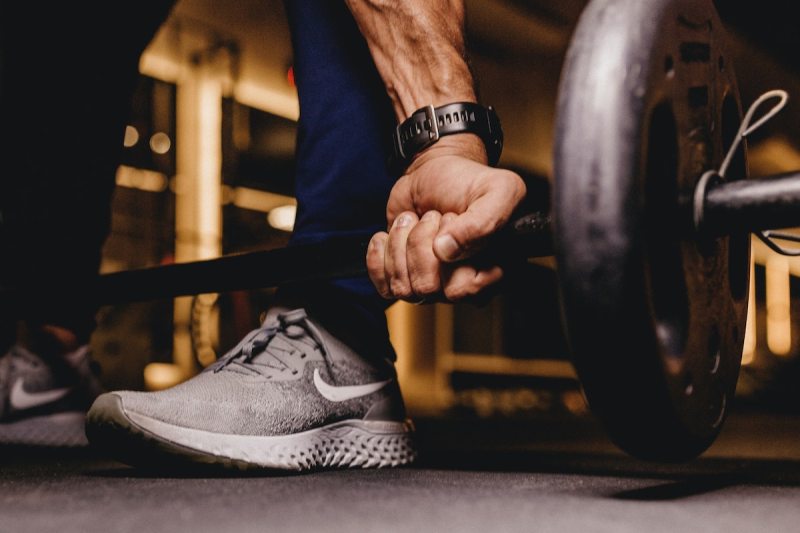
Events and celebrations that seem to just keep coming up may make it difficult for you to stick to your weight loss goals. However, employing new techniques just might be the perfect solution to guide you on your journey. Consider your diet, lifestyle habits, and exercise regimen the magic combination to lose weight.
When you take a closer look at your physical activity, you may wonder what type of workout is best suited for you. You can better achieve your goals by deciding between cardio or strength training for your workout routine.
Both types of exercise are effective in burning calories, building muscle, and improving endurance, which will give you positive weight loss results regardless of which workout type you choose.

The best benefits of strength training
Building muscle
One advantage of strength training is the ability to influence connective tissue stiffness, ultimately by strengthening the tissues and muscles. When you work against a force, you’ll experience neuromuscular and connective tissue adaptations that allow your strength to increase. Your ability and motor skills will be upgraded, and you’ll have boosted stamina for daily tasks and workouts.
Not only do your muscles get stronger by working against a load via some form of resistance, but they also can grow in size. Strength training helps build lean muscle mass, positively impacting your body’s composition.
In addition to muscle hypertrophy, you’ll achieve greater neuromuscular control that allows efficient communication between your muscles and brain, which optimizes your coordination and motor skills.
Reducing body fat
Consistent training can serve as a great way to reduce body fat. This is due to the influence of exercise on body composition, weight loss, and the ability to maintain weight. We should note that strength and resistance training have been better stimulators of muscle protein synthesis compared to other forms of exercise, allowing muscle mass to be increased and maintained.
Building lean muscle mass is a distinguishing feature of this exercise beyond the standard calorie burn. Growing your muscles can contribute to an increase in calories burned, even when you’re at rest.
Improving metabolic markers
Metabolic improvements are another great benefit of engaging in strength training. Consider that skeletal muscle, the lean mass, is the site of 80% of glucose uptake. The results of some research studies have suggested that strength training can be more effective in modulating glycemic control and body composition compared to aerobic exercise just by increasing lean mass.
The advantages of strength training don’t just benefit your blood sugar but are extended to many metabolic parameters and hormonal balance. Blood pressure may also be modulated, and you may see a decrease in cholesterol and triglycerides, which enhances your cardiovascular health. Additionally, insulin won’t be the only hormone attenuated, but also the production of testosterone and the stress hormone cortisol, which helps to keep your weight down.

The best benefits of cardio
Heart rate
The major hallmark of cardio workouts is the positive impact it has on heart health. This type of workout increases your heart rate, which supports your cardiovascular system as a whole. If you start with moderate cardio, your heart rate can be increased to 50-70% of the maximum, while intense cardio can bolster your heart rate to 70-85% of the maximum.
Addressing cardiovascular health factors is important because dysfunction of several components is often present in co-morbidity with obesity. Optimizing your cardiorespiratory fitness can help to ameliorate the aspects linked to obesity, like blood pressure and cholesterol.
Cardiovascular endurance
Boxers and other athletes often employ various cardio workouts because of the endurance and conditioning they entail. These exercises, like jumping rope or swimming, train your heart and lung function and also work in efficient calorie burning. The cardiovascular and metabolic conditioning serves as the foundation for your ability to sustain the entirety of the workout consistently.
Improvements in cardiometabolic health factors were associated with reduced risk of diabetes and metabolic syndrome. This also attenuates improvements and maintenance in weight and can be protective in preventing overweight status from becoming obese.
Neuromuscular strength
Like strength training, cardio workouts also support neuromuscular functions. You will strengthen the major muscles by engaging in running, high-intensity interval training, and other forms of cardio workouts. This often consists of considerable upper body workouts, which can strengthen and stabilize the core, promoting flexibility, agility, and speed.
Cardiovascular activity is crucial to the muscles because of its impact on the oxidative capacity of skeletal muscles. This is the driving force regarding how well oxygen is delivered to your muscles as you perform your workouts. Lower fat mass is associated with greater oxidative capacity.

Does lifting weights or cardio help with weight loss more?
Contrary to popular belief, there are benefits to lifting weights to lose weight. This form of fat loss and body re-composition will be suited for you if you prefer strength training to cardio workouts. With strength training, you’ll burn calories but also build muscle mass, which can promote muscle toning and suit you in the long run.
Advance by increasing your load and taking fewer rests, as this will increase the intensity of the workout and improve your energy expenditure. The increase in lean body mass can improve your metabolic rate, which makes way for greater calories burned throughout the day. With more calories burned even as you rest, you’ll achieve the desired caloric deficit more efficiently compared to cardio workouts.

How to optimize strength training for weight loss
You can make excellent strides on your path to weight loss by keeping up with a strength training program for at least eight to twelve weeks. Following a regimen within this timeframe can decrease your body fat percentage, as well as your waist circumference. The results of some studies indicate that strength training may generate better waist circumference and body fat percentage outcomes that equal or surpass the effects of long-duration cardio workouts.
A full-body workout can serve as the best exercise to lose weight due to muscle building and energy expenditure. You can do deadlifts, bench presses, and squats to start. Using heavier weights for the repetitions can optimize muscle hypertrophy and help drive the ability to burn calories.
To set up your strength training workouts, you could do walking lunges or Superman back extensions, as well as glute bridges. As you initiate your routine, using lighter weights and doing a greater number of reps will help encourage endurance that allows you to complete your exercises without fatigue. Once you advance, you can use heavier weights for fewer reps, and this will bolster your muscle’s size and strength.

3 best forms of cardio for losing weight
Cycling
One of the best cardio exercises is cycling because you’ll be able to burn calories and shed body fat. On average, a healthy goal is to burn roughly 500 calories, so you can try cycling at moderate intensity for 45 minutes to achieve this. If you set out to do this exercise five times each week, you’ll be able to optimize your energy expenditure.
Running
You can lose weight by making running a regular part of your regimen and by starting slowly and gradually picking up your speed and mileage. Running can effectively reduce body fat and decrease your waist circumference. Additionally, the cholesterol-lowering effects, combined with blood pressure and glucose control, can help you manage your weight and protect against common metabolic disorders.
High-intensity interval training
If you want to take things up a notch, try HIIT. HIIT workouts include exercises like burpees or mountain climbers to work on your cardiovascular system and your weight.
Engaging in HIIT workouts for weight loss can be effective, not only due to the previously mentioned glucose control but also because muscle fat oxidation is improved. Intense workouts with limited rest can permit you to burn roughly 300 to 450 calories every half-hour for the average person, and pairing this with good dietary habits can promote weight loss of one or two pounds each week.
The fact of the matter is both cardio and strength training can help you become healthier. Cardio can help you burn calories and shed pounds, while strength training can help you improve your body composition (more muscle, less fat). A combination of the two — along with a healthy diet — is your best bet for reaching your weight loss goals.
Editors' Recommendations
- The 3 best punching bag workouts to transform your fitness routine
- The best shoulder workouts: These are the exercises you need
- 10 delicious weight loss meals that are 300 calories or less
- A registered dietitian reveals the ingredient swaps that will keep your favorite Christmas cookies from ruining your weight loss goals
- Stationary bike benefits: Cardiovascular, weight loss, and more




